Some of the links in this post may be affiliate links.
Is your hibiscus dying, or maybe you have one that is struggling to bloom? Are you interested in turning your plant around so that it becomes a lush, blooming machine? I’ve been growing hibiscus for many years, and I wanted to share the most common problems and solutions with you so that you too can have a thriving plant!
I will first go over some common problems with hibiscus, but then keep reading to the end where I also go over general care tips on how to keep your plant growing well and thriving.
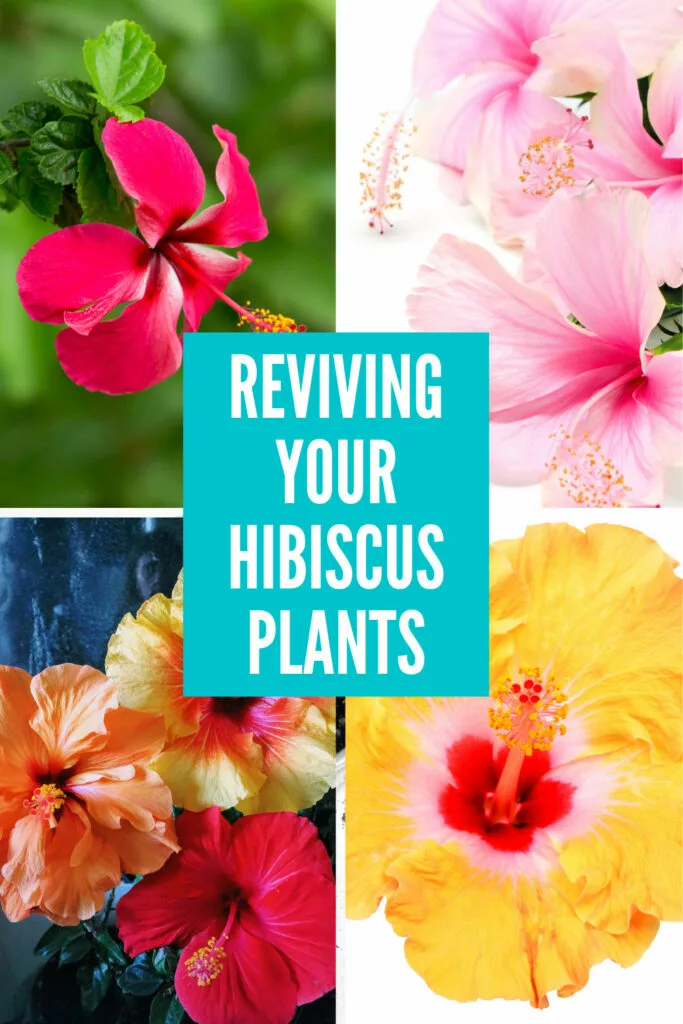
Table of Contents
COMMON HIBISCUS QUESTIONS WITH SOLUTIONS
Note that this post is about tropical hibiscus, and not to be confused with Rose of Sharon or even hardy hibiscus, both of which are hardy in many cold-winter regions. Tropical hibiscus are very tender and will perish in cold weather.
1. Why are my hibiscus flowers dying quickly?
This is just the nature of the flowers. Flowers only last one full day, and then it’s time to deadhead! Some newer varieties sometimes last a bit longer, but plan on short-lived flowers.
This is the way nature designed these plants so it is nothing that you are doing wrong.
Be sure to deadhead the flowers daily to keep the plant tidier since spent flowers can quickly make a mess.
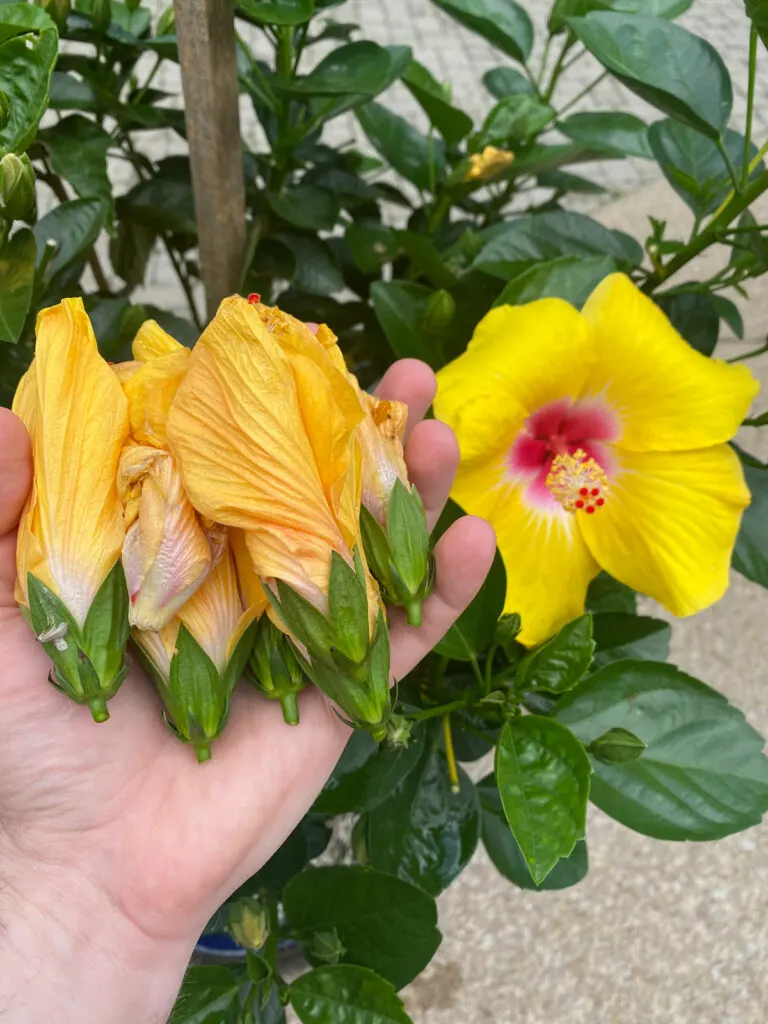
When your hibiscus flowers are done, be sure to deadhead promptly since the spent blossoms can smother the some of the foliage and encourage pests and diseases.
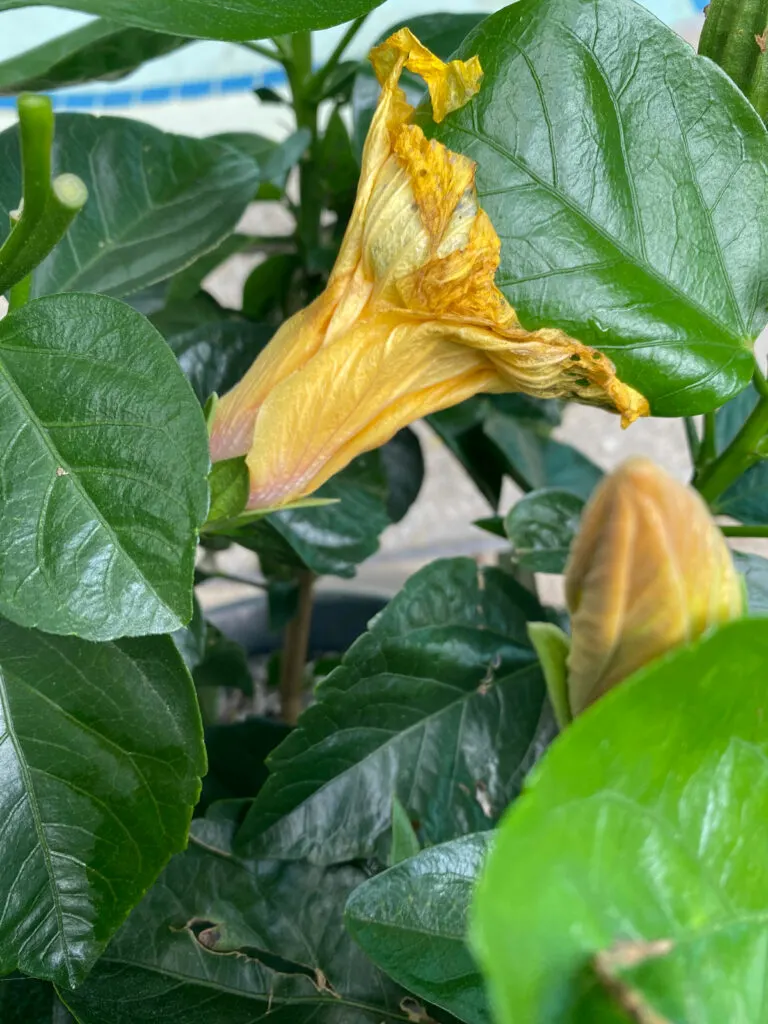
Be sure to also remove the base of the flower itself when you deadhead so that you don’t have seed pods developing and taking energy away from your plant.
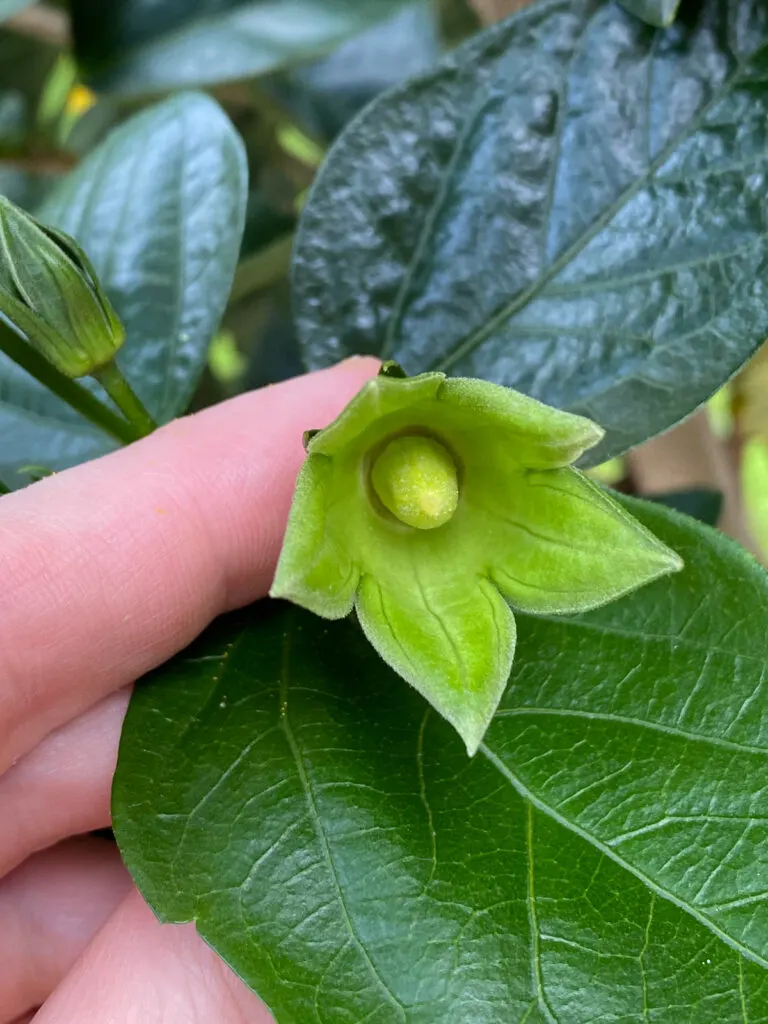
2. Why are my hibiscus flowers dying and falling off before opening?
Sometimes flower buds will fall off well before they open. Why does this happen?
There are quite a few reasons why this can happen. These can include:
- 1. Allowing your potting mix to go completely dry. If you let your plant get to the point of the foliage wilting, you will often see some flower buds fall off before opening.
- 2. Potting mix staying too wet. Never let your plant sit in water and stay sopping wet for extended periods.
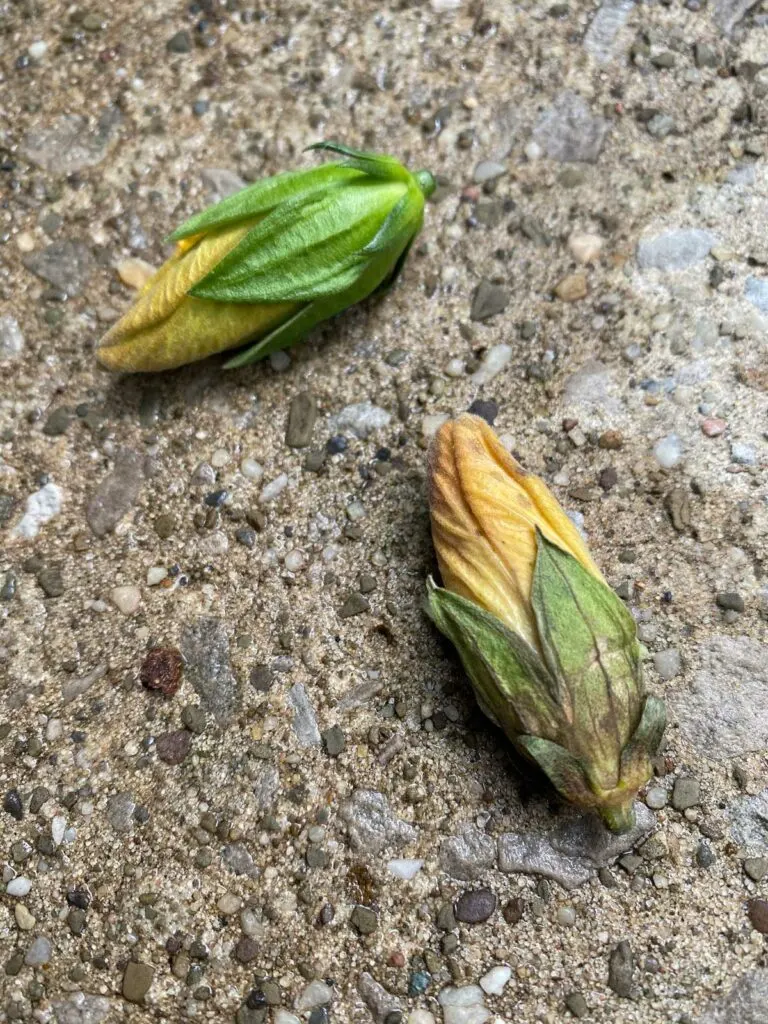
- 3. Reportedly, double-flowered hibiscus are more prone to buds dropping, but I commonly see it in any variety.
- 4. Extremes in temperature, either too cold (below 50F) or too hot (above 90F) can also cause bud drop.
- 5. Thrips can also cause flower buds to fall off before they open. Learn how to identify and treat thrips in your hibiscus.
3. Why is my hibiscus not blooming?
If your plant appears healthy and green and isn’t producing any flowers, it is very likely that your plant is not receiving enough direct sun. Whether you grow hibiscus indoors or outdoors, they need at least a few hours of direct sun in order to bloom .
Hibiscus are also heavy feeders and you must be sure that you’re fertilizing enough.
Both sunlight AND fertilizing are vital for a blooming hibiscus.
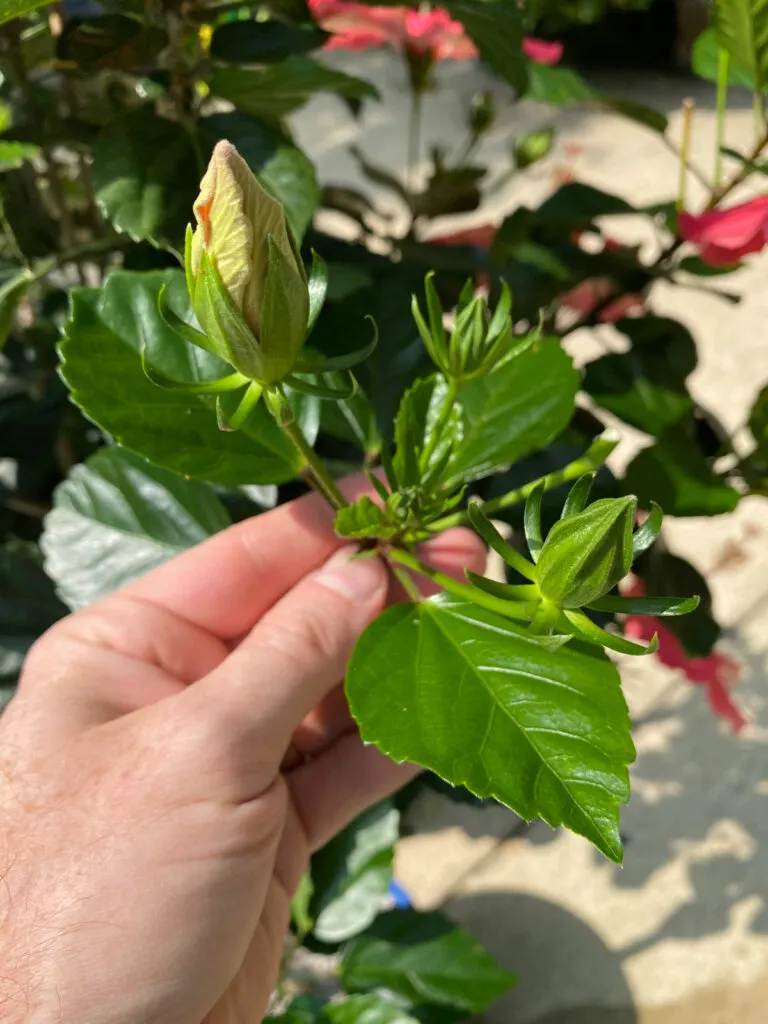
I grow my hibiscus outdoors in warm weather and treat them as annuals. When I purchase them in late Spring, I’ll promptly move them into a larger pot (I typically go about 1-2 sizes larger than the container it was previously growing in.
Next, I like to use an application of Osmocote Plus (link to Amazon) when I repot it. After about 1 to 1 1/2 months, I’ll make another application of Osmocote Plus.
Osmocote is a time-release fertilizer that will gradually and continuously supply your plants with nutrients every time you water.
In addition to this application, I will also water my plants with Fish Emulsion & Kelp every 1-2 weeks.
Given the right conditions, including following this fertilization regiment (along with plenty of sunshine outdoors), my hibiscus plants bloom continually all summer-long!
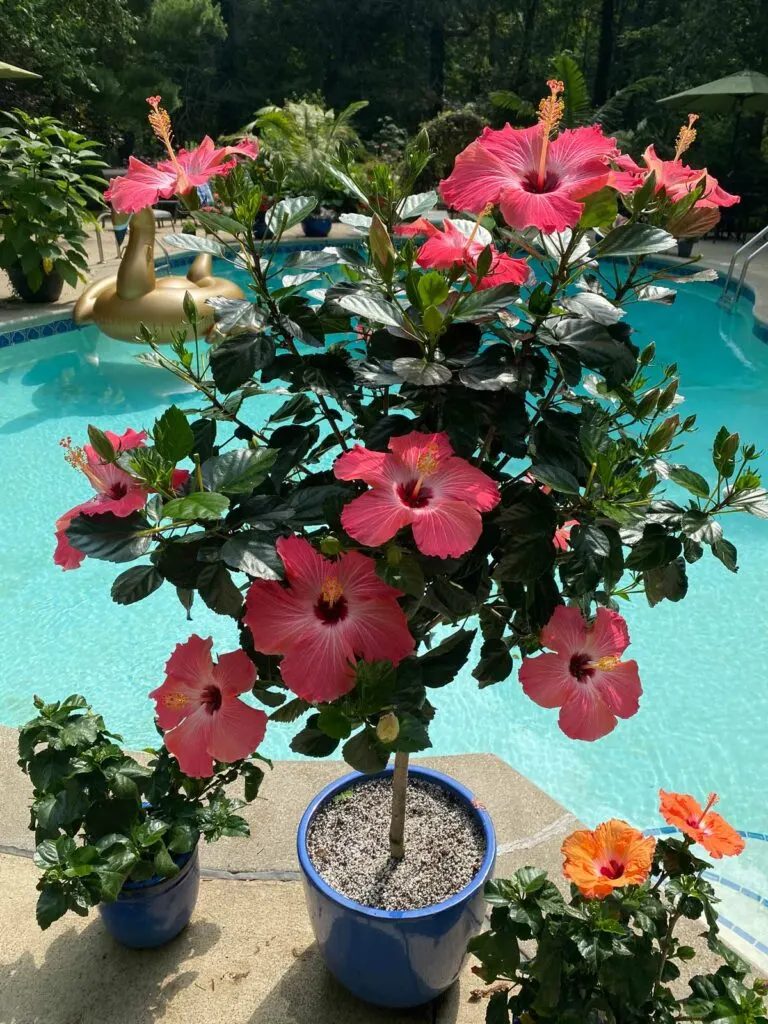
For more detailed information how getting your hibiscus to flower abundantly, check out my post: How to Get Hibiscus to Bloom.
4. Why is my hibiscus getting yellow leaves?
A yellow leaf or two is normal, but if you start to see quite a bit of them, and quickly, it’s time to evaluate the cause. Like any plant problem, there are several different causes:
- Extremes in soil moisture (too dry or too wet) is a common cause of yellow leaves. Feel your potting mix. If it has gone bone dry, go ahead and promptly soak your plant thoroughly. On the opposite end, NEVER let your plant sit in water for extended periods of time. Always grow in a pot with a drainage hole and empty out any accumulated water that could have collected in the saucer.
- Extremes in temperature. Tropical hibiscus love it WARM and typically do best in the 65-85F temperature range. Temperatures that are too cold or too hot can result in yellow leaves. Cold, drafty windows indoors, or when temperatures start to get cold outside if you’re growing them outdoors, can cause this.
- If you’re moving a plant that has been growing lush and beautifully outdoors and move it indoors, hibiscus will often respond in protest with quite a few yellow leaves. There is much less light indoors and the plant can not support all of the foliage that it developed while it was growing outdoors.
- Spider mites can also cause yellow leaves. Leaves will typically appear a mottled yellow and will continually turn more yellow over time. Looks closely to find the characteristic fine webbing of the spider mites (including on the underside of leaves). Spider mites thrive in hot, dry conditions, especially when there are low levels of humidity. Check out my blog post on how to treat spider mites.
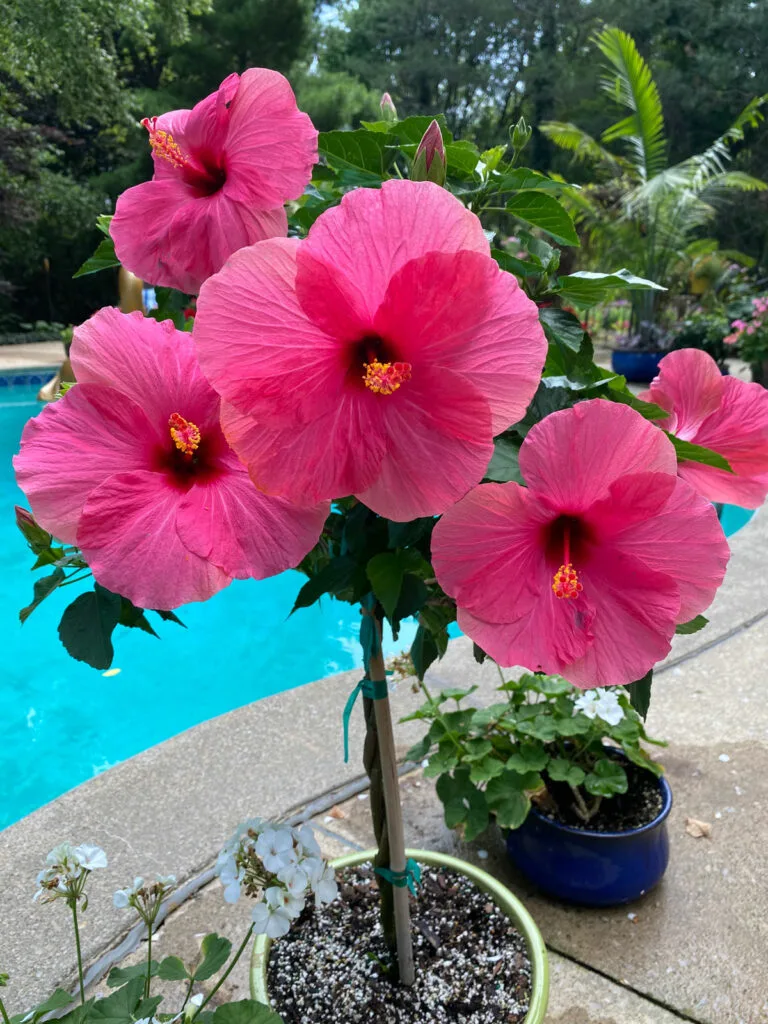
5. Why does my hibiscus have yellow leaves with green veins?
This is likely a symptom of chlorosis, and a classic sign would be where the leaf veins remain green, but the rest of the leaf turns yellow.
There are many causes of chlorosis, including an iron or magnesium deficiency, soil that is too acidic or alkaline, waterlogged soil, and any pests/diseases affecting the roots.
6. What is eating my hibiscus flowers?
There are a number of pests can you affect hibiscus, but the one that typically affects mine outdoors are Japanese beetles.
Without fail, for me, they start to appear around the beginning of July and persist for about a month. I often see them eating right through new flower buds, well before they open, and they will also attack fully opened flowers as well.
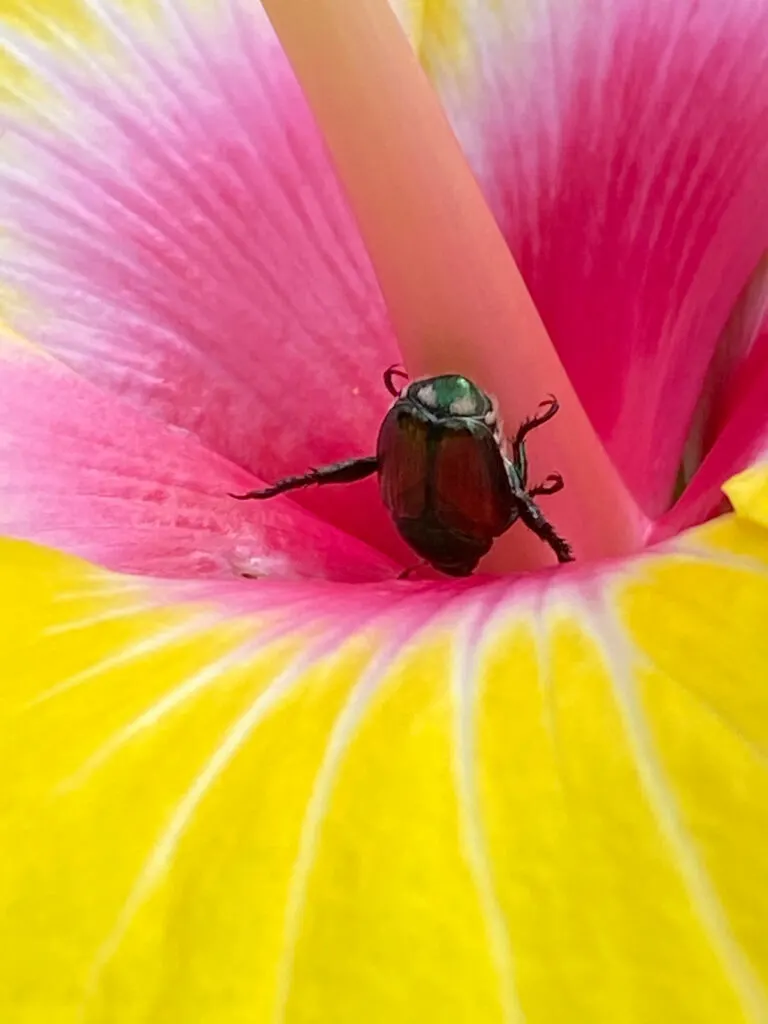
Here is what Japanese beetle damage looks like on hibiscus flowers.
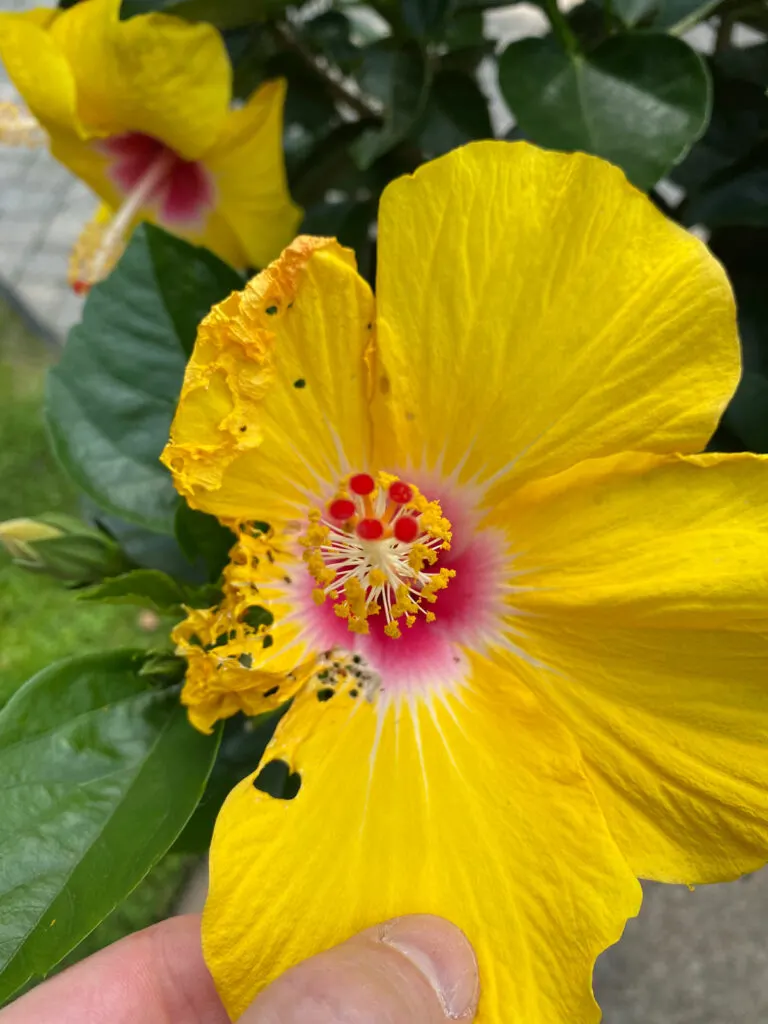
You’ll want to look on the undersides of the flowers too to find the Japanese beetles.
Did you know that grubs in your grass actually grow up to be Japanese beetles? Be sure not to miss my blog post that talks about how to deal with Japanese beetles.
If I notice them on my hibiscus flowers, I’ll either pick them off and throw them on the ground and step on them, or flick them into a cup of soapy water. You’ll want to be consistent and do this daily if you notice Japanese beetles on your plants.
Some other major pests of hibiscus include white flies, aphids, and mealybugs, all of which are easily treated with an insecticidal soap. You can also try neem oil, though I’m not a fan of the smell and I find insecticidal soaps are more effective.
7. Why is my hibiscus wilting?
The most common reason for a wilting hibiscus is soil that has gone too dry. Hibiscus truly despise when their soil goes completely dry, and the entire plant will wilt. If you feel your soil and it is bone dry, promptly soak it.
A dehydrated hibiscus can die pretty quickly if you leave it dry for too long.
Plants can also wilt when under stress from temperature extremes (too cold or too hot).
If you are growing your plants outdoors in pots like I do, when it gets too cold, you can move them indoors if you are planning on saving your plant over the winter time.
On any hot day, make sure that you keep your plants watered enough if you keep your plants outdoors. They will usually need watering daily in hot, sunny weather.
TROPICAL HIBISCUS PLANT CARE
LIGHT
For best results, give your hibiscus full sun to partial shade for good growth and flower production. Without enough sun, your plant will give you few, if any blooms and no one purchases these as foliage plants! These are full-sun plants so give your plant the brightest location that you can.
Just be careful when you do increase light for your plant so that you’re not burning the foliage. If you have a hibiscus indoors that you’d like to move outdoors, always place it in full-shade first outdoors for several days and then gradually increase the sun exposure.
If you fail to acclimate your plant slowly enough, you may see white splotches on your leaves that resulted from sun scorch.
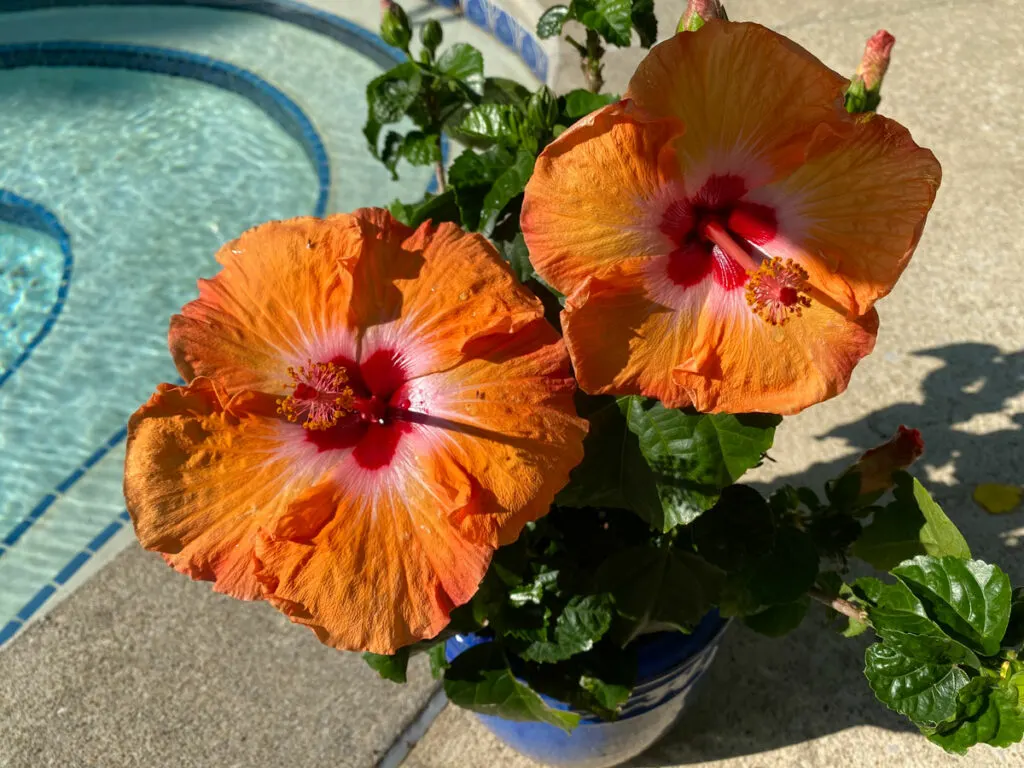
To elaborate a bit more on light, if you’re growing these plants indoors, give them the sunniest window possible.
I live in Ohio, where I normally grow mine only outdoors in pots, and I give them the sunniest position possible.
If you live in any areas that have very strong sun, in addition to very hot conditions, you may want to give them only a half day of sun outdoors.
WATERING
During hot and dry weather, regular watering is a must, and if you grow hibiscus outdoors in pots like I do, they will usually require watering daily so be sure to provide them with enough water.
If you let your potting mix dry out completely, the lower leaves will often turn yellow. Do this repeatedly, and you will lose a lot of leaves.
It is best to try and maintain a fairy moist potting mix for your plant and avoid extremes in soil moisture. I would recommend aiming for a pretty evenly moist soil and only allow the top inch or two to dry out before watering again.
Good drainage is essential so always grow hibiscus in pots with drainage holes. Root rot can quickly set in if you allow your plant to sit in excessive moisture.
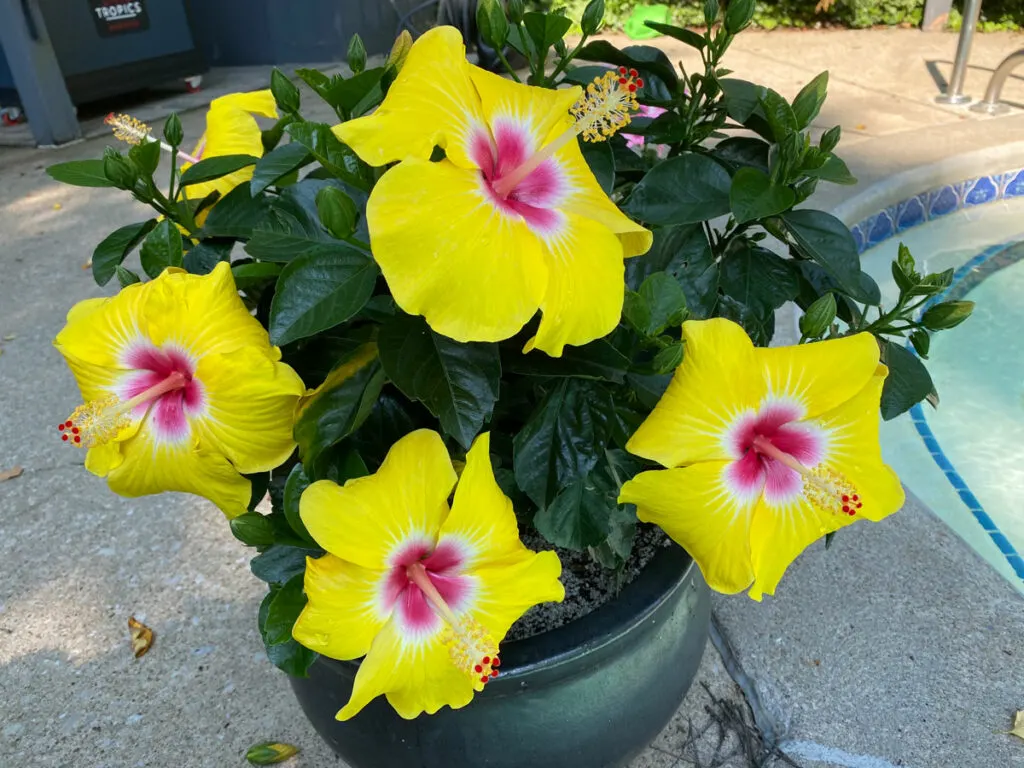
TEMPERATURE
Being tropical plants, hibiscus are freeze babies and love warm weather. These are NOT hardy plants and will freeze and die in temperatures at or below freezing.
Even temperatures in the 40-50F range will cause your plant to start shutting down and suffer. An ideal temperatures range is 65-85F.
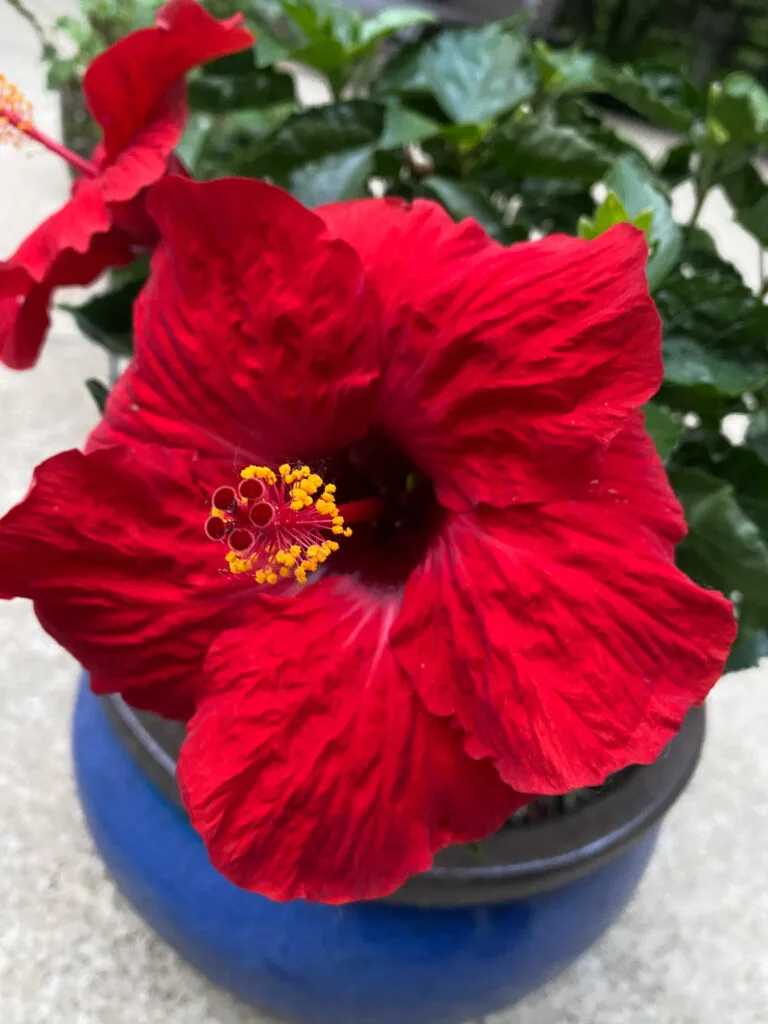
FERTILIZING
Fertilizing is a MUST in order to have a healthy, blooming plant.
Hibiscus are heavy feeders so be sure to regularly fertilize for best results.
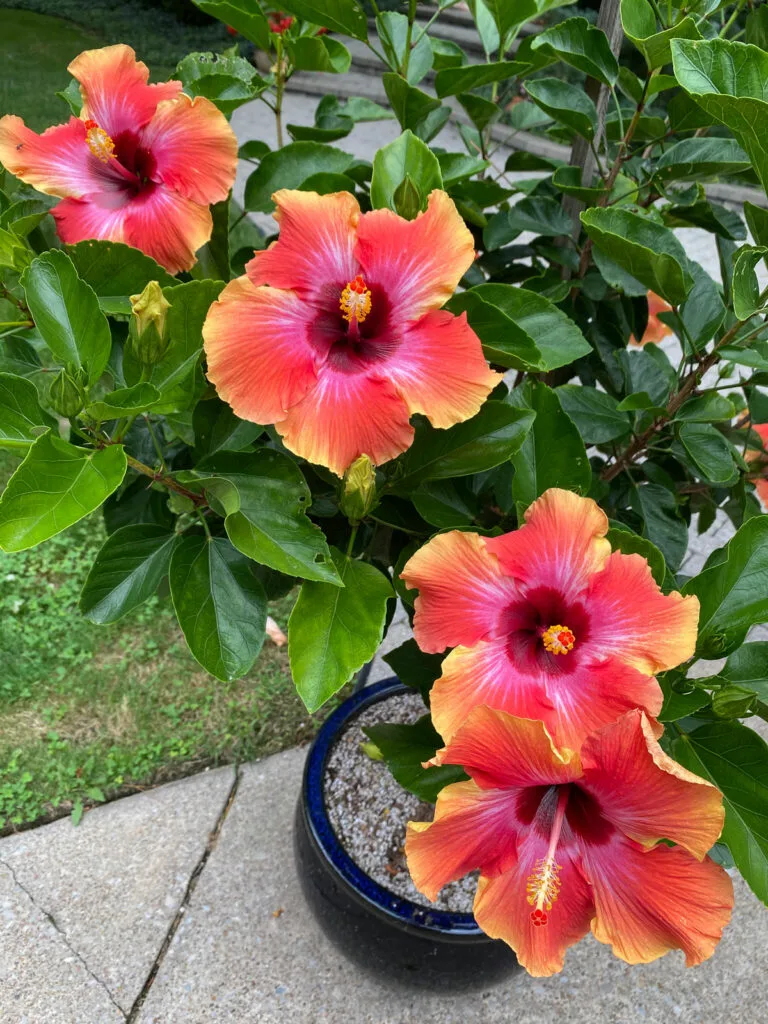
REPOTTING
When you purchase a hibiscus from the garden center, most of the time they’re going to be pretty root bound and will dry out very quickly in the nursery pots that they’re growing in.
In my experience, it is very important to not keep them in these containers and transplant them into a pot that is 1-2 sizes bigger than their old pot.
If you don’t do this, it may be too difficult to keep your plant properly hydrated, thus causing a host of different issues.
You can use a variety of different potting mixes, but what I usually do is mix about 3 parts of Miracle Gro potting mix with 1 part of perlite to fluff things up a bit and improve drainage.

If you’d like to keep your hibiscus plants over the winter, check out my blog post on a 5 step process that you can use for overwintering hibiscus.
FREQUENTLY ASKED QUESTIONS
Can you grow hibiscus from seed?
Yes you can, but the resulting plants can vary and may not look like the parent plant. It’s always a gamble, but fun to try if you have the patience. Check out this informative article from Hidden Valley Hibiscus for more details if you are interested.
How can you tell the difference between a hibiscus seed pod and a flower bud?
If you look closely, you can easily tell the difference. Take a look at the photos below.
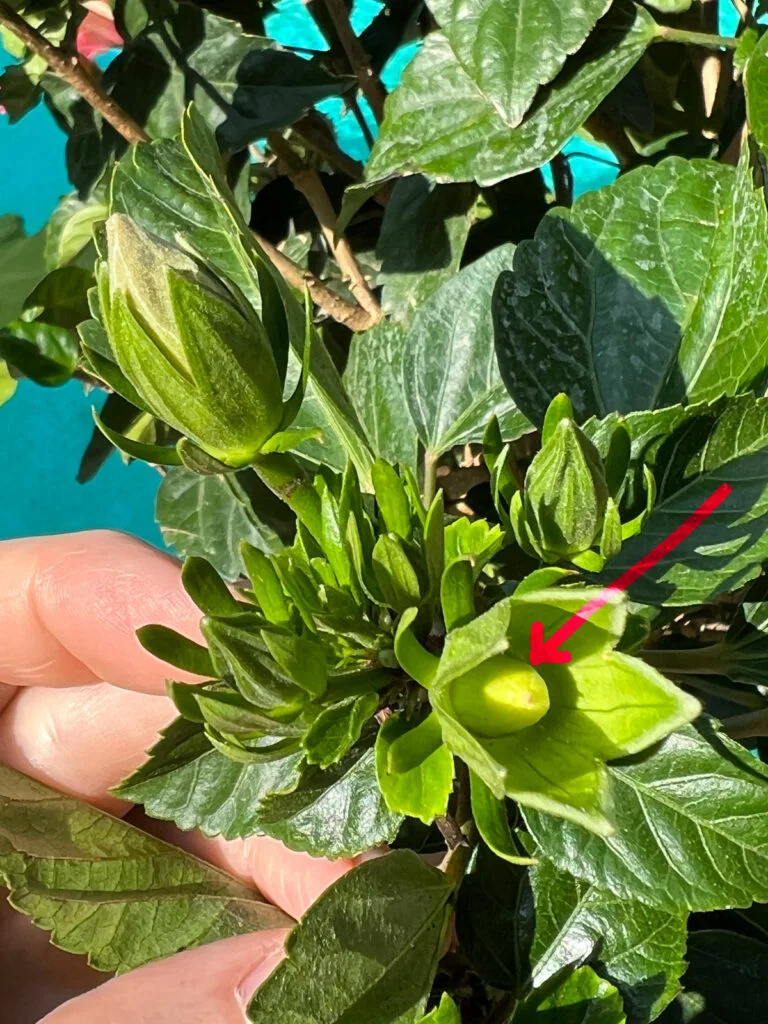
In the picture above, I placed a red arrow pointing to the hibiscus seed pod. The rest of that cluster contains all flower buds in different stages of development.
You can see that the seed pod is round, while the flower buds are pointy at the tips and have edges on them.
Should I remove hibiscus seed pods?
Yes, although the spent flowers themselves usually fall off, you should also remove the seed pods so that that your plant can continue to focus its energy on flower production instead of setting seed.
Are hibiscus plants annuals or perennials?
The long answer is they are perennials, but sometimes they act as annuals. There are more varieties than just tropical hibiscus. Check out my post on are hibiscus plants annuals or perennials to learn the answer, and to learn more about the common types that are grown in gardens.
If you are looking for other plants in your garden that flower nonstop, check out my post on plants that flower all summer long.

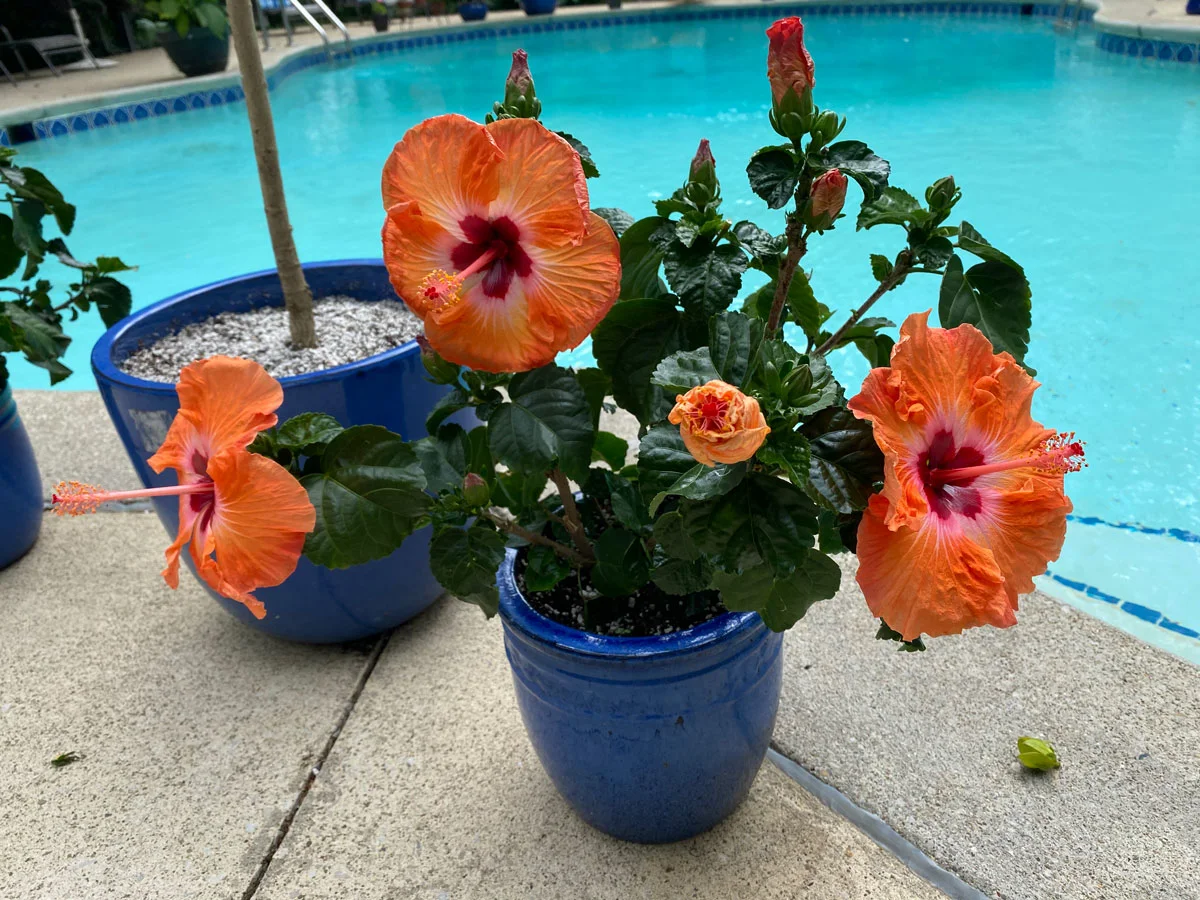
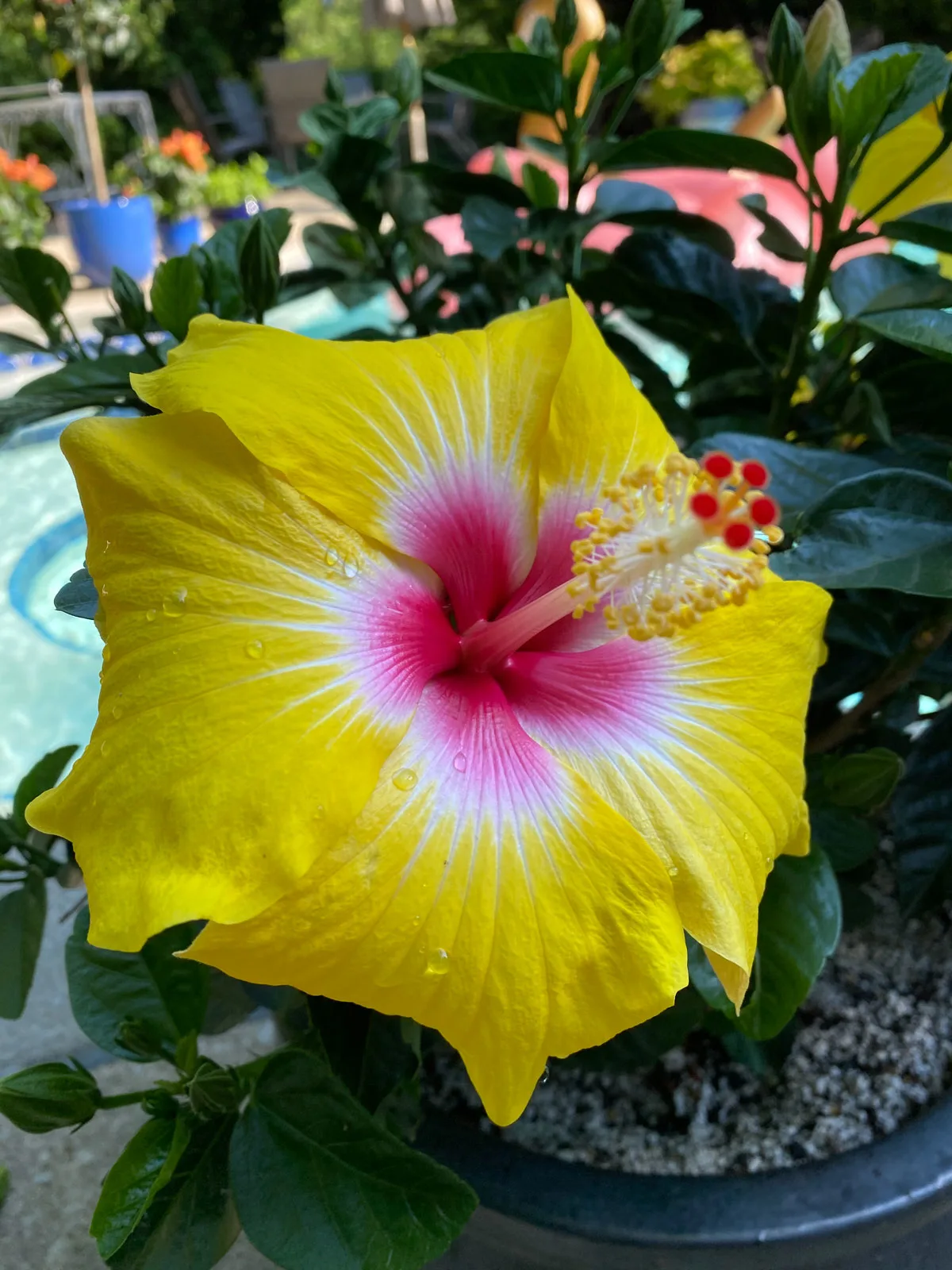
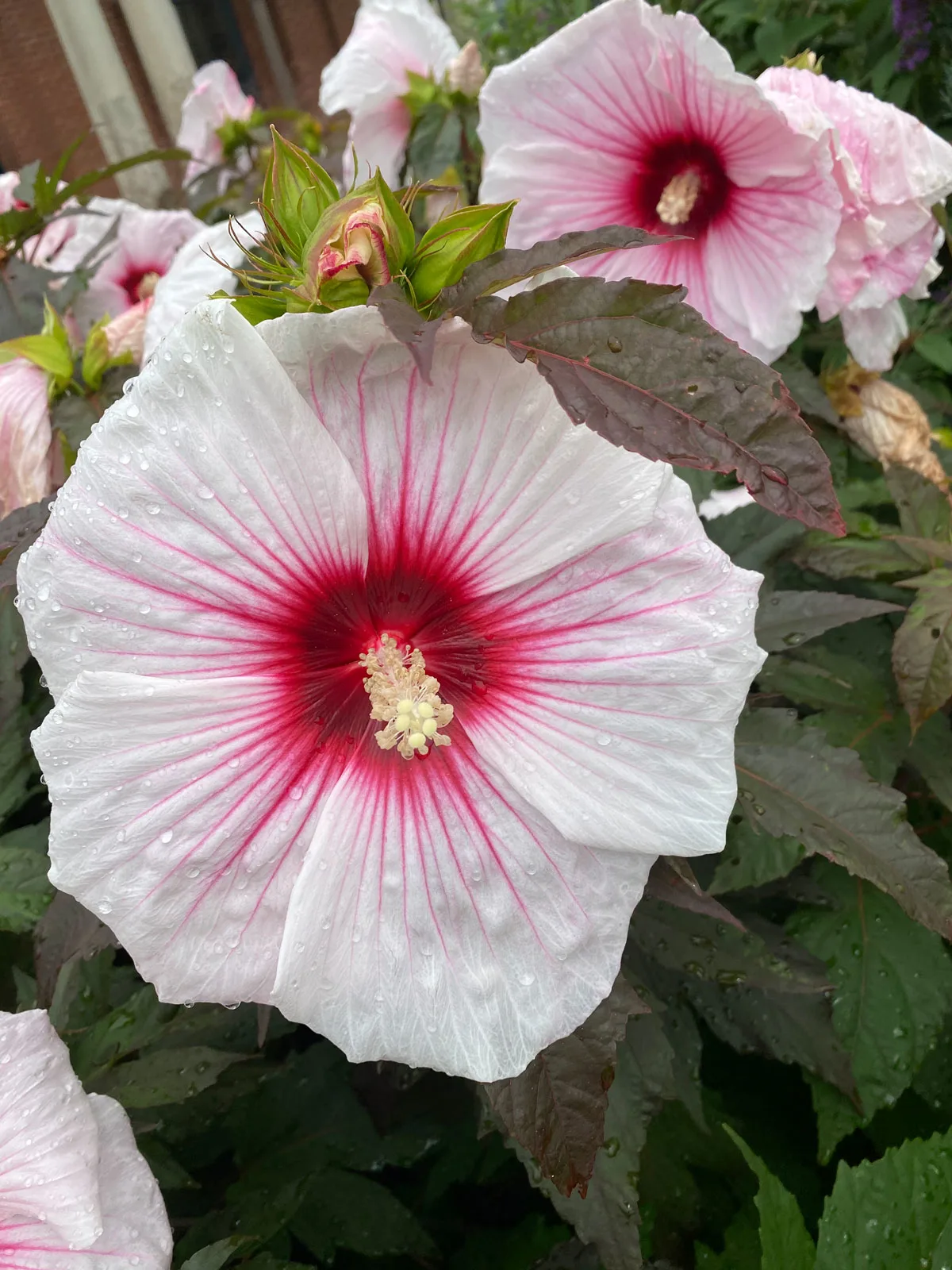
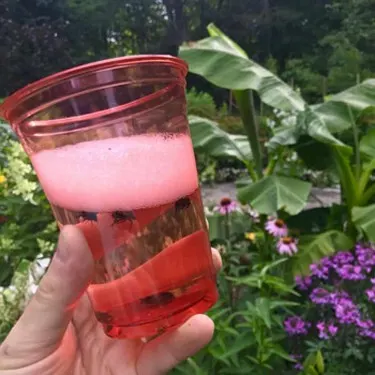
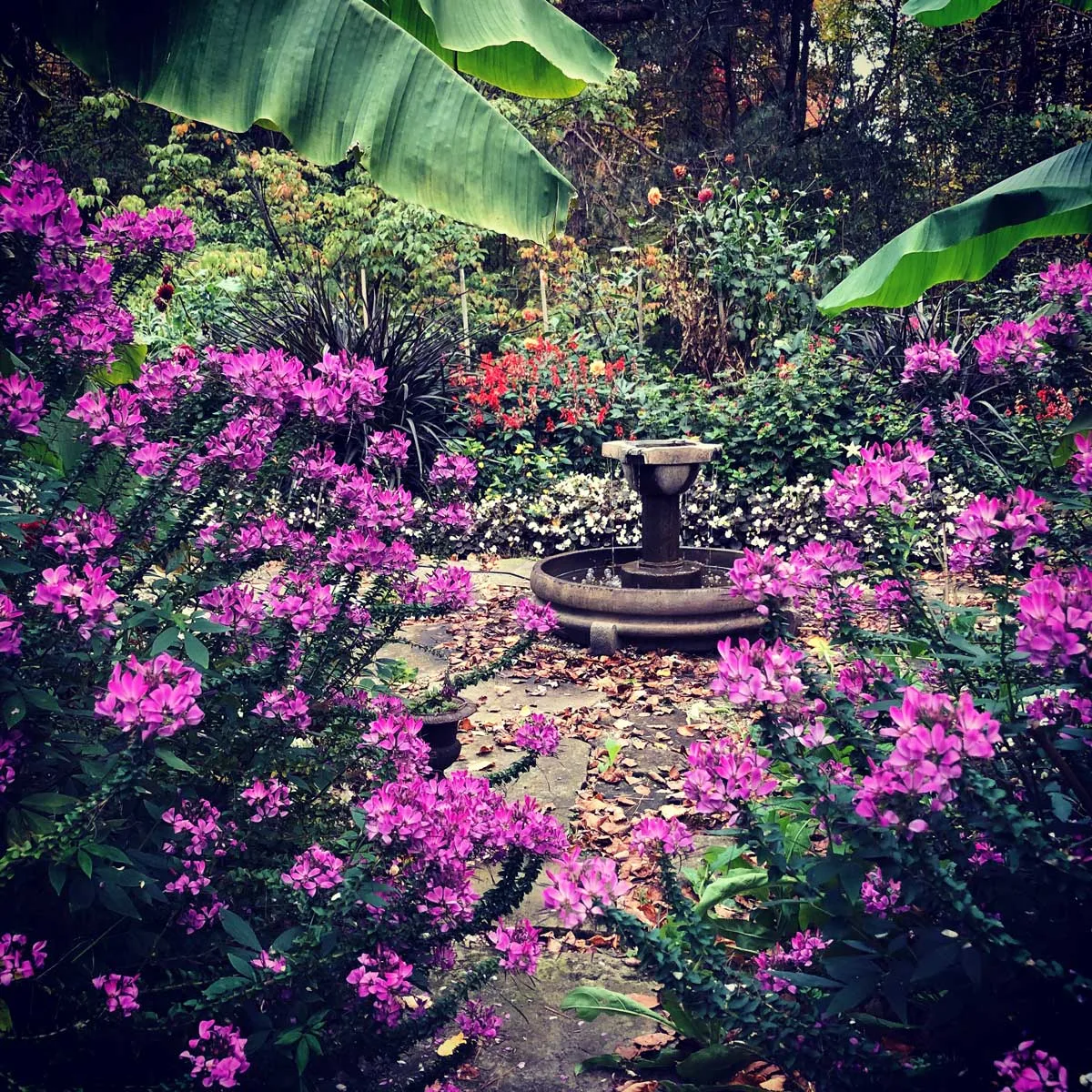
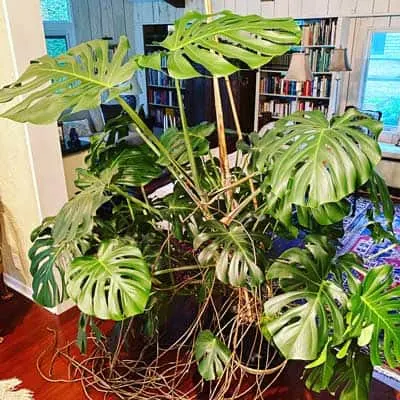
Mary Ann Henderson
Thursday 6th of June 2024
My hibiscus did well for a few weeks - then it started to get probably not enough sun and the leaves started yellowing and falling off even though it is still flowering. I am going to move it to a sunnier location - question - should I cut it back to encourage new green growth?
Raffaele Di Lallo
Saturday 8th of June 2024
Yes, you can cut it back, but know that it will take a little longer for blooms to arrive. It will help the plant get bushier though for the long run. If it was only the bottom leaves that yellowed, the potting mix may have gone too dry after you increased the light. More light means more water, so you'll have to adjust the watering to make sure it doesn't dry out.
Angie
Saturday 9th of December 2023
I had my hibiscus plant for about a month and a half. I enjoyed it, so beautiful. After that it started to die, now it's jus the skeleton. Lims are so dry that they break. What the heck did I do wrong. All my other plants are so green and beautiful. I live in Arizona.
Raffaele
Monday 11th of December 2023
Hi Angie! I'd imagine that your soil probably stayed too dry. Hibiscus need quite a bit of water.
Candace
Saturday 4th of November 2023
My hibiscus had bugs and webs on the leaves I got rid of the bugs and webs but all the leaves on the plant dies what can I do to revive it?
Raffaele
Monday 6th of November 2023
Hi Candace! I need more information on your growing conditions (light, watering practices, etc) to be able to help.
Tasha
Saturday 4th of November 2023
I repeated my plant so I could bring it inside for the winner. And now my leaves are turning yellow and they're all wilted help¡!!!¡
Raffaele
Monday 6th of November 2023
I'm sorry to hear that Tasha! Repotting would best be done in later winter/early spring though, not in the Fall. For future reference, here is a post I wrote on overwintering hibiscus to show what I do: https://www.ohiotropics.com/2022/07/28/overwintering-hibiscus/ I would probably prune your plant a bit at this point like I describe in the post. What is the size of the old pot versus the new pot? Some yellowing of the leaves is very normal as the plant adjusts to reduced light indoors. Hope this helps a bit.
Susan Finley
Wednesday 2nd of August 2023
Great article. The photos are so helpful! Thanks.
Raffaele
Wednesday 2nd of August 2023
So happy that you enjoyed it Susan!